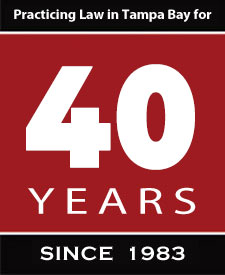As of the third quarter of 2017, 2.07 billion people actively used the social networking site Facebook on a monthly basis. Instagram, the mainly mobile photo-sharing network, serves 800 million active monthly users.
Digital evidence is often critical in proving or disproving a material issue. Thus, a court determination regarding the admissibility of such evidence can create profound consequences on the outcome of a case. Although the proliferation of recovered digital evidence has created a burgeoning body of case law, the courts are not always unified in their approach to determining the admissibility of such evidence.
In Florida, the general rule is that “[a]ll relevant evidence is admissible, except as provided by law.” Further, “[r]elevant evidence is evidence tending to prove or disprove a material fact.” Lastly, “[r]elevant evidence is inadmissible if its probative value is substantially outweighed by the danger of unfair prejudice, confusion of issues, misleading the jury, or needless presentation of cumulative evidence.” Thus, as with any other evidence, the threshold issue for the admissibility of social media posts or messages is relevance.
After relevance has been properly demonstrated, the proponent of digital evidence must next establish authenticity. Under Florida law “[e]vidence is authenticated when prima facie evidence is introduced to prove that the proffered evidence is authentic.” “The authentication of social media poses unique issues regarding what is required to make a prima facie showing that the matter is what the proponent claims.” It stands to reason that one can easily impersonate another for the purpose of opening a social media account. Thus, to prove authorship, it is necessary to present evidence beyond simply identifying the name appearing on a social media account. There are three recognized methods for authenticating a piece of electronic evidence: 1) a witness with firsthand knowledge; 2) extrinsic evidence; and 3) the silent witness theory.
The proponent of digital evidence does not need to present a witness who saw the digital evidence penned. Instead, the witness may discuss having seen prior postings by the author to the account at issue and stylistic and content cues indicating authorship.
A prudent practitioner should not only obtain a custodian records affidavit from the hosting platform provider, but should also strive to identify independent extrinsic evidence to prove authorship identity.
The final methodology for authentication of social media posts is the “silent witness” theory. Under the “silent witness” theory, evidence may be authenticated upon a presentation of proof of the reliability of the process that produced the evidence. For example, a digital photograph may be admitted into evidence upon a showing of installation and view of the camera. Moreover, a piece of evidence may itself reflect sufficient indicia of reliability for authentication.
The final hurdle to admissibility is the satisfaction of a hearsay exception. As with the prior analyses relating to relevance and authenticity, the proponent must determine the purpose of the evidence. Some digital evidence is not subject to hearsay analysis. Photographs and silent video mined from a social media account are not statements, thus, do not constitute hearsay. However, a photograph or video may contain a statement, requiring the application of a hearsay exception.
Most reported social media cases involve the admission of evidence against the author. It is well-established that statements contained within traditional correspondence constitute admissions of a party opponent, rendering such statements admissible.
The widespread, nearly universal, use of social media platforms dictates that data mined from social media postings will be imperative to proof in a growing number of civil and criminal cases. Thus, familiarity with evidentiary standards governing the admission of electronic evidence is of paramount concern in the practice of law. Although the admission of digital evidence was not contemplated at the time many evidentiary requirements were drafted, evolving case law recognizes that traditional predicates may be well-utilized to support the admission of such evidence.1
1 This blog contains an abbreviation of an article published in The Florida Bar Journal. Miller, Bronwyn and Barakat, Brian. “A Prolific Landscape: The Admissibility of Social Media Postings”. The Florida Bar Journal. April, 2018. Volume 92, No. 4, retrieved from https://www.floridabar.org/news/tfb-journal/?durl=%2Fdivcom%2Fjn%2Fjnjournal01.nsf%2F8c9f13012b96736985256aa900624829%2F8ad88daf93d505258525825c0072ee2c.


